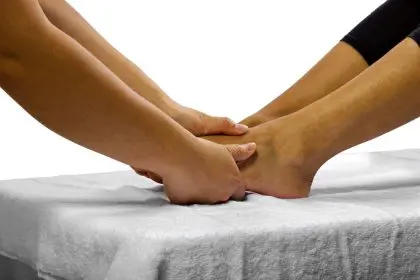In today’s world, where long hours in front of screens and sedentary lifestyles are the norm, optimal body alignment is more important than ever. The rise of posture correctors offers a promising solution to this widespread problem, but how effective are these devices in the long term? Here’s a closer look at what posture correctors really offer and how to achieve lasting improvement.
Defining posture correctors
Posture correctors are tools designed to help realign the body and promote better posture. These devices come in different forms, from braces and straps to wearable sensors and intelligent monitoring systems. While each device works differently, the goal is the same: to encourage the body into proper alignment and provide support for improved posture.
How posture correctors work
Posture correctors operate through various mechanisms. Some physically reposition the body, pulling the shoulders back and aligning the spine, while others use sensory feedback to alert the user when they slouch. Many posture correctors also aim to activate muscles that are essential for maintaining proper alignment, offering a reminder to engage muscles that help keep the body upright. Additionally, some of these devices track posture in real-time, helping users stay aware of their body alignment throughout the day.
The scientific perspective on posture correctors
While experts agree that posture correctors can offer temporary relief for posture-related discomfort, they aren’t a cure-all. Studies suggest that these devices can help with short-term relief by promoting awareness of poor posture. However, for lasting improvements, experts recommend a more comprehensive approach. Relying solely on posture correctors can potentially inhibit muscle development, as the devices do some of the work that your muscles should be doing. Long-term improvement requires building strength and awareness through regular exercise and conscious body mechanics.
The potential risks and considerations
While posture correctors can be helpful, they come with some risks if not used properly. One of the main concerns is the potential for muscle strain. If you overuse a posture corrector, your muscles may become dependent on the device for support, weakening over time. Additionally, wearing these devices for extended periods can lead to skin irritation, especially with braces or straps that rub against the skin. There are also concerns about mobility restrictions, as some posture correctors limit movement, which can lead to further discomfort or a lack of flexibility.
Taking a holistic approach to improving posture
To truly improve posture, posture correctors should be seen as part of a larger, more holistic strategy. Incorporating resistance training, yoga, and flexibility practices can help strengthen muscles that support good posture. Yoga, in particular, is effective for improving both strength and flexibility, two key components of a healthy spine. Additionally, mindful movement—being aware of your body’s position while sitting, standing, or walking—can help prevent poor posture habits from developing in the first place.
Ergonomics also plays a significant role in supporting healthy posture. Modifying your workspace to promote proper alignment can reduce the strain on your body throughout the day. Sitting in an ergonomic chair, ensuring your computer screen is at eye level, and taking regular breaks to stand and stretch can all help prevent discomfort.
Recommended posture correctors
If you’re considering using a posture corrector, there are a few devices that stand out in terms of performance and user satisfaction. Hempvana Arrow, for instance, uses advanced alignment technology to help adjust your posture and alleviate discomfort. The FlexGuard Support is versatile, offering support across a wide range of postural needs, while the Kizu Spine Posture Corrector offers a comprehensive system for improving spinal alignment. While these devices can provide support, it’s essential to use them in conjunction with other methods to strengthen and maintain proper posture.
Managing pain related to posture
If you’re already dealing with pain due to poor posture, there are several strategies you can incorporate into your routine to alleviate discomfort. Heat and cold therapies can help soothe muscles and reduce inflammation. Incorporating regular stretching into your day helps maintain flexibility and relieve tension in the muscles. Strengthening your core muscles will provide additional support for your spine, making it easier to maintain proper posture throughout the day.
Making ergonomic adjustments to your environment can also help. For instance, adjusting your workstation to ensure it promotes good posture will prevent unnecessary strain. However, in cases of chronic pain or more severe posture-related issues, professional therapeutic interventions may be necessary. A physical therapist can help identify the root causes of your discomfort and provide personalized strategies to improve your posture over time.
When to seek professional help
Although many posture issues can be addressed with self-care strategies, some cases require professional medical attention. If you experience persistent pain that doesn’t improve after several weeks of treatment, it’s time to seek help. Similarly, unexplained weight changes, neurological symptoms like numbness or tingling, or systemic health changes such as fever or swelling may be signs of underlying health conditions that need to be addressed by a healthcare provider. Early intervention is crucial to prevent long-term damage and ensure that you receive the right treatment.
A comprehensive approach to postural health
Ultimately, the best way to achieve lasting posture improvements is through a holistic approach. Posture correctors are helpful tools that can raise awareness and provide temporary relief, but they should not be relied upon exclusively. A comprehensive strategy includes physical awareness, targeted exercise, ergonomic adjustments, and lifestyle changes. Maintaining a mindful approach to your body mechanics throughout the day, alongside strengthening and stretching exercises, will support long-term alignment and well-being.
Conclusion
Posture correctors offer valuable assistance in the pursuit of better body alignment, but they are only part of the solution. To achieve lasting improvements, a combination of exercise, mindfulness, ergonomic modifications, and professional interventions, if necessary, will yield the best results. By adopting a comprehensive approach, you can ensure that your body stays aligned and your health is supported for years to come.














